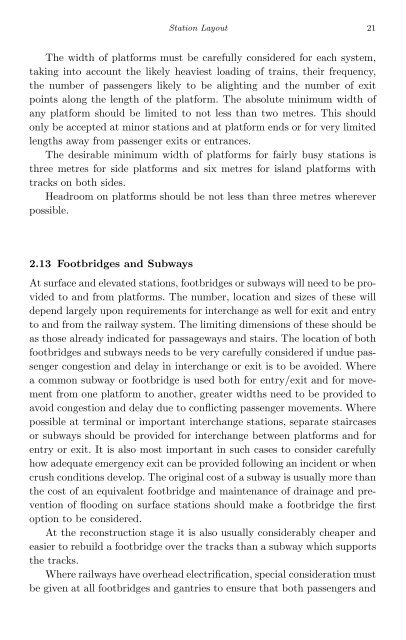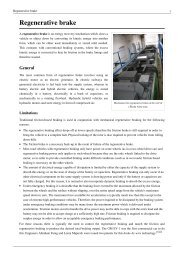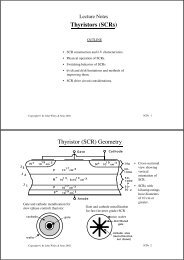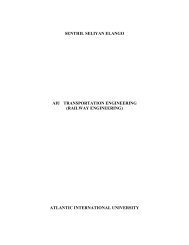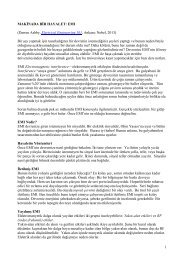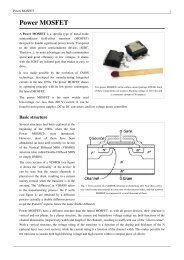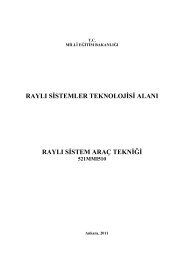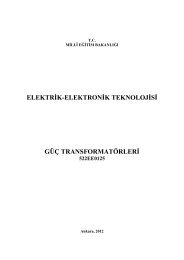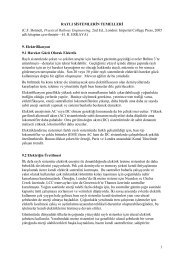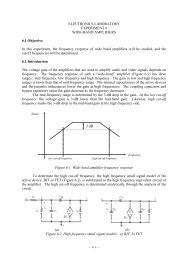2nd Edition
2nd Edition
2nd Edition
Create successful ePaper yourself
Turn your PDF publications into a flip-book with our unique Google optimized e-Paper software.
Station Layout 21<br />
The width of platforms must be carefully considered for each system,<br />
taking into account the likely heaviest loading of trains, their frequency,<br />
the number of passengers likely to be alighting and the number of exit<br />
points along the length of the platform. The absolute minimum width of<br />
any platform should be limited to not less than two metres. This should<br />
only be accepted at minor stations and at platform ends or for very limited<br />
lengths away from passenger exits or entrances.<br />
The desirable minimum width of platforms for fairly busy stations is<br />
three metres for side platforms and six metres for island platforms with<br />
tracks on both sides.<br />
Headroom on platforms should be not less than three metres wherever<br />
possible.<br />
2.13 Footbridges and Subways<br />
At surface and elevated stations, footbridges or subways will need to be provided<br />
to and from platforms. The number, location and sizes of these will<br />
depend largely upon requirements for interchange as well for exit and entry<br />
to and from the railway system. The limiting dimensions of these should be<br />
as those already indicated for passageways and stairs. The location of both<br />
footbridges and subways needs to be very carefully considered if undue passenger<br />
congestion and delay in interchange or exit is to be avoided. Where<br />
a common subway or footbridge is used both for entry/exit and for movement<br />
from one platform to another, greater widths need to be provided to<br />
avoid congestion and delay due to conflicting passenger movements. Where<br />
possible at terminal or important interchange stations, separate staircases<br />
or subways should be provided for interchange between platforms and for<br />
entry or exit. It is also most important in such cases to consider carefully<br />
how adequate emergency exit can be provided following an incident or when<br />
crush conditions develop. The original cost of a subway is usually more than<br />
the cost of an equivalent footbridge and maintenance of drainage and prevention<br />
of flooding on surface stations should make a footbridge the first<br />
option to be considered.<br />
At the reconstruction stage it is also usually considerably cheaper and<br />
easier to rebuild a footbridge over the tracks than a subway which supports<br />
the tracks.<br />
Where railways have overhead electrification, special consideration must<br />
be given at all footbridges and gantries to ensure that both passengers and


